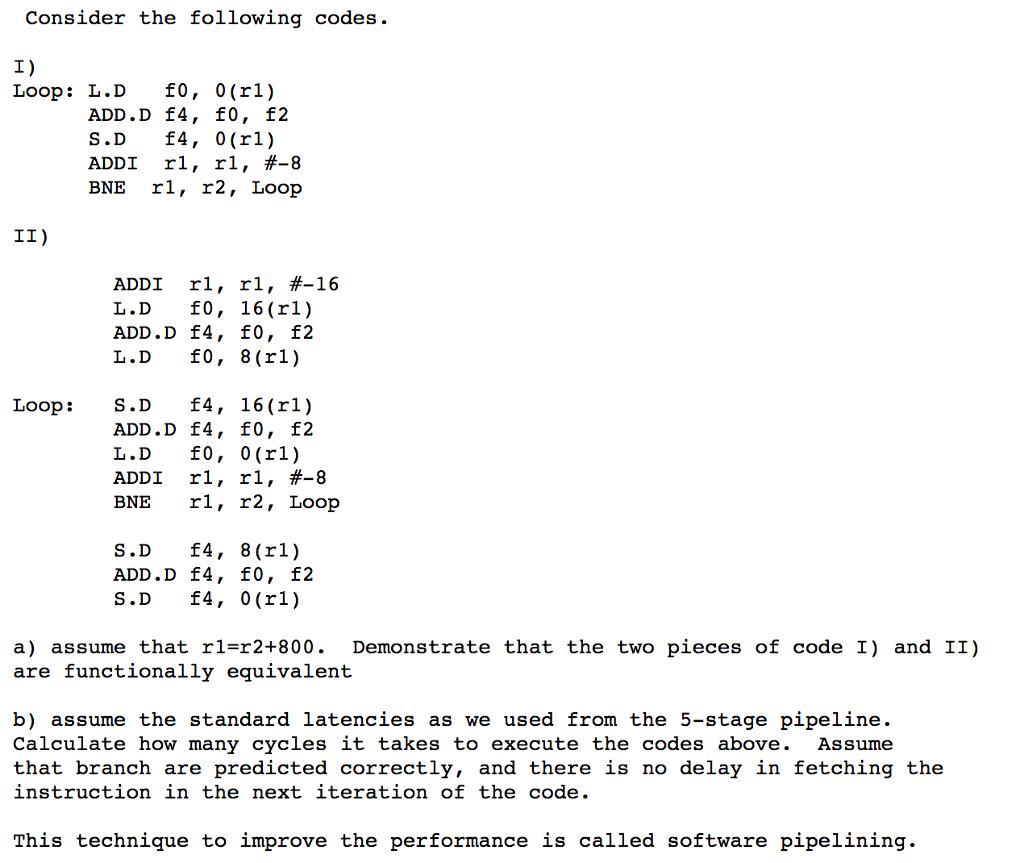Question
Consider the following codes. I) Loop: L.D II) Loop: f0, 0(rl) ADD.D f4, f0, f2 S.D f4, 0(rl) ADDI rl, r1, #23-8 BNE rl,

Consider the following codes. I) Loop: L.D II) Loop: f0, 0(rl) ADD.D f4, f0, f2 S.D f4, 0(rl) ADDI rl, r1, #23-8 BNE rl, r2, Loop ADDI rl, r1, #2-16 L.D f0, 16(rl) ADD.D f4, f0, f2 L.D f0, 8(rl) S.D f4, 16(rl) ADD.D f4, f0, f2 L.D f0, 0(rl) ADDI rl, r1, #23-8 BNE r1, r2, Loop S.D f4, 8(rl) ADD.D f4, f0, f2 S.D f4, 0(rl) a) assume that rl=r2+800. Demonstrate that the two pieces of code I) and II) are functionally equivalent b) assume the standard latencies as we used from the 5-stage pipeline. Calculate how many cycles it takes to execute the codes above. Assume that branch are predicted correctly, and there is no delay in fetching the instruction in the next iteration of the code. This technique to improve the performance is called software pipelining.
Step by Step Solution
There are 3 Steps involved in it
Step: 1

Get Instant Access to Expert-Tailored Solutions
See step-by-step solutions with expert insights and AI powered tools for academic success
Step: 2

Step: 3

Ace Your Homework with AI
Get the answers you need in no time with our AI-driven, step-by-step assistance
Get StartedRecommended Textbook for
Computer Architecture A Quantitative Approach
Authors: John L. Hennessy, David A. Patterson
4th edition
123704901, 978-0123704900
Students also viewed these Programming questions
Question
Answered: 1 week ago
Question
Answered: 1 week ago
Question
Answered: 1 week ago
Question
Answered: 1 week ago
Question
Answered: 1 week ago
Question
Answered: 1 week ago
Question
Answered: 1 week ago
Question
Answered: 1 week ago
Question
Answered: 1 week ago
Question
Answered: 1 week ago
Question
Answered: 1 week ago
Question
Answered: 1 week ago
Question
Answered: 1 week ago
Question
Answered: 1 week ago
Question
Answered: 1 week ago
Question
Answered: 1 week ago
Question
Answered: 1 week ago
Question
Answered: 1 week ago
Question
Answered: 1 week ago
Question
Answered: 1 week ago
Question
Answered: 1 week ago
Question
Answered: 1 week ago
View Answer in SolutionInn App



